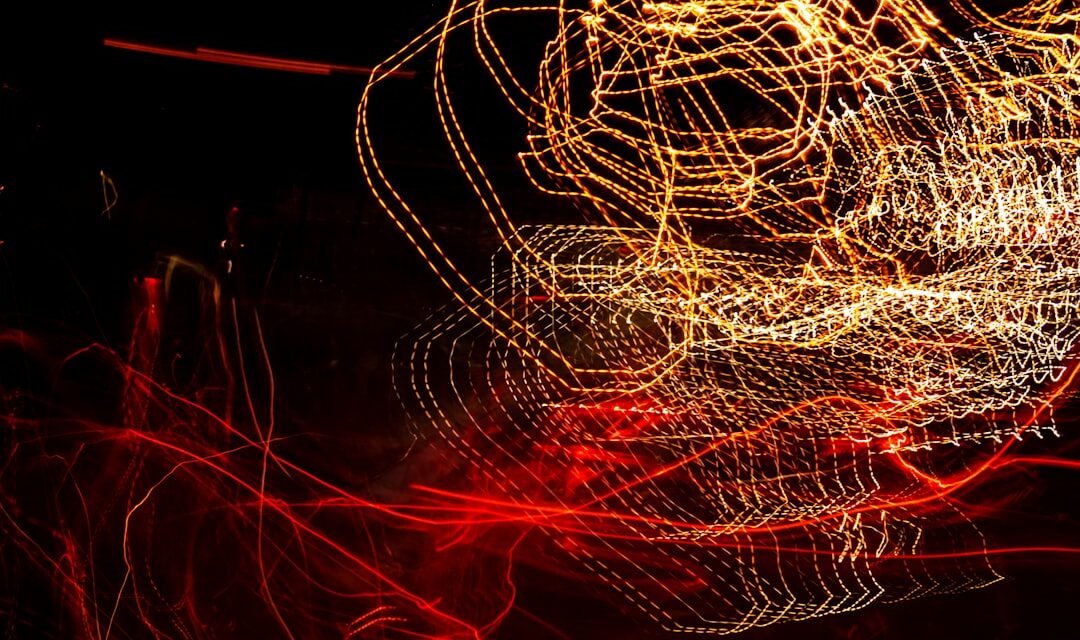William Blake was born on 28 November 1757 in Soho, London, to a middle-class family. From an early age, he demonstrated a strong interest in art and literature, with his parents supporting his creative endeavours. He attended Henry Pars’s drawing school and subsequently apprenticed to an engraver, where he honed his skills in engraving and printing.
Despite lacking formal education, Blake was an avid reader and autodidact in numerous subjects, including poetry, philosophy and theology. His early exposure to the works of Shakespeare, Milton and the Bible significantly influenced his artistic and literary development. Blake’s unconventional upbringing and education profoundly shaped his worldview and artistic style.
His early experiences in London, with its bustling streets and diverse population, provided a rich source of inspiration for his later works. His exposure to the social and political upheavals of the era, such as the American and French Revolutions, also informed his radical beliefs and artistic expression. Blake’s early life and education established the foundation for his unique artistic vision and distinguished him from his contemporaries.
Summary
- William Blake was born in London in 1757 and showed an early talent for drawing and painting.
- He was influenced by the Gothic and Renaissance art styles, as well as by the work of Michelangelo and Albrecht Dürer.
- Blake’s literary works and poetry often explored themes of innocence, experience, and the struggle between good and evil.
- He had a complex relationship with organised religion and was known for his spiritual beliefs that were deeply rooted in his own personal experiences.
- Blake’s unique artistic and literary style had a significant impact on the Romantic Movement, influencing poets such as William Wordsworth and Samuel Taylor Coleridge.
- His legacy continues to influence art and literature, and his works are celebrated for their originality and depth of meaning.
- Notable works and collections by William Blake include “Songs of Innocence and Experience” and “The Marriage of Heaven and Hell”.
Artistic Style and Influences
Influences from the Past
Blake was heavily influenced by the Renaissance masters, particularly Michelangelo and Raphael, whose works he studied and admired. He also drew inspiration from medieval art and literature, as well as from the vibrant visual culture of London.
A Unique Technique
One of the most distinctive aspects of Blake’s artistic style is his use of relief etching, a technique he developed himself. This method allowed him to combine text and image seamlessly, giving his works a sense of unity and coherence.
A Visionary Artist
His illustrations for his own poetry are particularly renowned for their intricate detail and symbolic richness. Overall, Blake’s artistic style was a fusion of classical influences, spiritual symbolism, and innovative techniques, which set him apart as a visionary artist ahead of his time.
Literary Works and Poetry

In addition to his visual art, William Blake was also a prolific poet and writer. His literary works are often seen as an extension of his visual art, with both mediums serving as vehicles for his radical ideas and spiritual vision. Blake’s poetry is known for its lyrical beauty, complex symbolism, and profound philosophical insights.
His most famous collection of poems, “Songs of Innocence and Experience,” explores the duality of human nature and the contrast between innocence and corruption. Blake’s poetry often delved into themes of love, nature, religion, and social injustice, reflecting his deep concern for the human condition. His writing style was highly original, blending traditional poetic forms with his own innovative techniques.
His use of mythological imagery and biblical allusions added depth and complexity to his work, making it both timeless and relevant to contemporary readers. Overall, Blake’s literary works are a testament to his creative genius and his ability to transcend conventional boundaries in both art and poetry.
Religious and Spiritual Beliefs
Religion played a central role in William Blake’s life and work. He was deeply influenced by the teachings of Emanuel Swedenborg, a Swedish theologian whose mystical interpretations of Christianity had a profound impact on Blake’s spiritual beliefs. Blake rejected the traditional doctrines of organized religion in favour of a more personal and visionary approach to faith.
He believed in the power of imagination as a means of connecting with the divine and saw the world as a reflection of spiritual truths. Blake’s religious views were often at odds with the prevailing orthodoxy of his time, leading him to be regarded as a heretic by many. His rejection of institutionalized religion and embrace of a more individualistic spirituality set him apart as a radical thinker and visionary poet.
His writings often expressed his belief in the unity of all existence and the interconnectedness of the material and spiritual worlds. Overall, Blake’s religious and spiritual beliefs were integral to his artistic vision and served as a driving force behind his creative output.
Relationship with the Romantic Movement
William Blake is often associated with the Romantic movement in literature and art, although he was not fully embraced by his contemporaries during his lifetime. His rejection of conventional norms and embrace of individualism aligned with the ideals of Romanticism, which sought to celebrate the imagination, emotion, and natural world. Blake’s emphasis on the power of creativity as a means of transcending societal constraints resonated with other Romantic poets such as Wordsworth and Coleridge.
Despite these shared ideals, Blake’s radical beliefs and unorthodox artistic style set him apart from other Romantic poets and artists. His visionary approach to art and poetry was often misunderstood or dismissed by his peers, leading to his relative obscurity during his lifetime. However, in the years following his death, Blake’s work gained recognition as a significant contribution to the Romantic movement, influencing subsequent generations of artists and writers.
Overall, Blake’s relationship with Romanticism was complex, as he both embodied its core principles and challenged its boundaries with his radical vision.
Legacy and Impact on Art and Literature

Influence on Literature
Blake’s influence can be seen in the works of later Romantic poets such as Shelley and Keats, who were inspired by his radical ideas and innovative techniques.
Lasting Impact on Visual Art
In the realm of visual art, Blake’s impact is equally profound, with artists such as Dante Gabriel Rossetti and William Morris citing him as a major influence on their work. His use of symbolism and his fusion of text and image continue to resonate with contemporary artists seeking to explore new forms of expression.
A Timeless Legacy
Overall, Blake’s legacy as a visionary artist and poet has left an enduring impact on art and literature, shaping the course of creative expression for generations to come.
Notable Works and Collections
Some of William Blake’s most notable works include “Songs of Innocence” (1789) and “Songs of Experience” (1794), which are collections of poems accompanied by his own illustrations. These works explore themes of childhood innocence, social injustice, and the human experience, showcasing Blake’s unique blend of poetry and visual art. Another significant work is “The Marriage of Heaven and Hell” (1790-1793), a prose-poem that challenges traditional notions of good and evil while celebrating the power of imagination.
In addition to these collections, Blake produced a series of illuminated books that combined text and image in innovative ways. These include “The Book of Thel” (1789), “The Book of Urizen” (1794), “The Book of Los” (1795), “The Book of Ahania” (1795), and “Milton: A Poem” (1804-1810). These works showcase Blake’s mastery of relief etching and his ability to create intricate visual narratives that complement his poetic themes.
Today, many of Blake’s original works are housed in prestigious collections such as the British Museum, Tate Britain, and the Victoria & Albert Museum in London. These institutions preserve his legacy for future generations to appreciate and study. In addition to these physical collections, numerous digital archives make Blake’s work accessible to a global audience, ensuring that his visionary artistry continues to inspire audiences around the world.
If you are interested in learning more about the art movements that followed William Blake’s era, you may want to read about post-impressionism. This artistic movement, which emerged in the late 19th century, is characterised by its use of vivid colours, thick brushstrokes, and a focus on everyday subject matter. To delve deeper into this fascinating period in art history, check out this article on post-impressionism.
FAQs
Who was William Blake?
William Blake (1757-1827) was an English poet, painter, and printmaker. He is considered a seminal figure in the history of the poetry and visual arts of the Romantic Age.
What is William Blake known for?
William Blake is known for his innovative poetry and for his unique approach to visual art, particularly his illuminated printing technique. He is also known for his mystical and symbolic approach to his work.
What are some of William Blake’s most famous works?
Some of William Blake’s most famous works include “Songs of Innocence and of Experience,” “The Marriage of Heaven and Hell,” “The Tyger,” and “The Book of Urizen.”
What was William Blake’s artistic style?
William Blake’s artistic style is often characterized by its mystical and symbolic elements, as well as his use of vivid and imaginative imagery. He was also known for his innovative approach to printmaking, particularly his illuminated printing technique.
What influence did William Blake have on the arts?
William Blake’s work had a significant influence on the development of poetry and visual arts, particularly during the Romantic Age. His innovative approach to both poetry and visual art continues to inspire artists and writers to this day.




